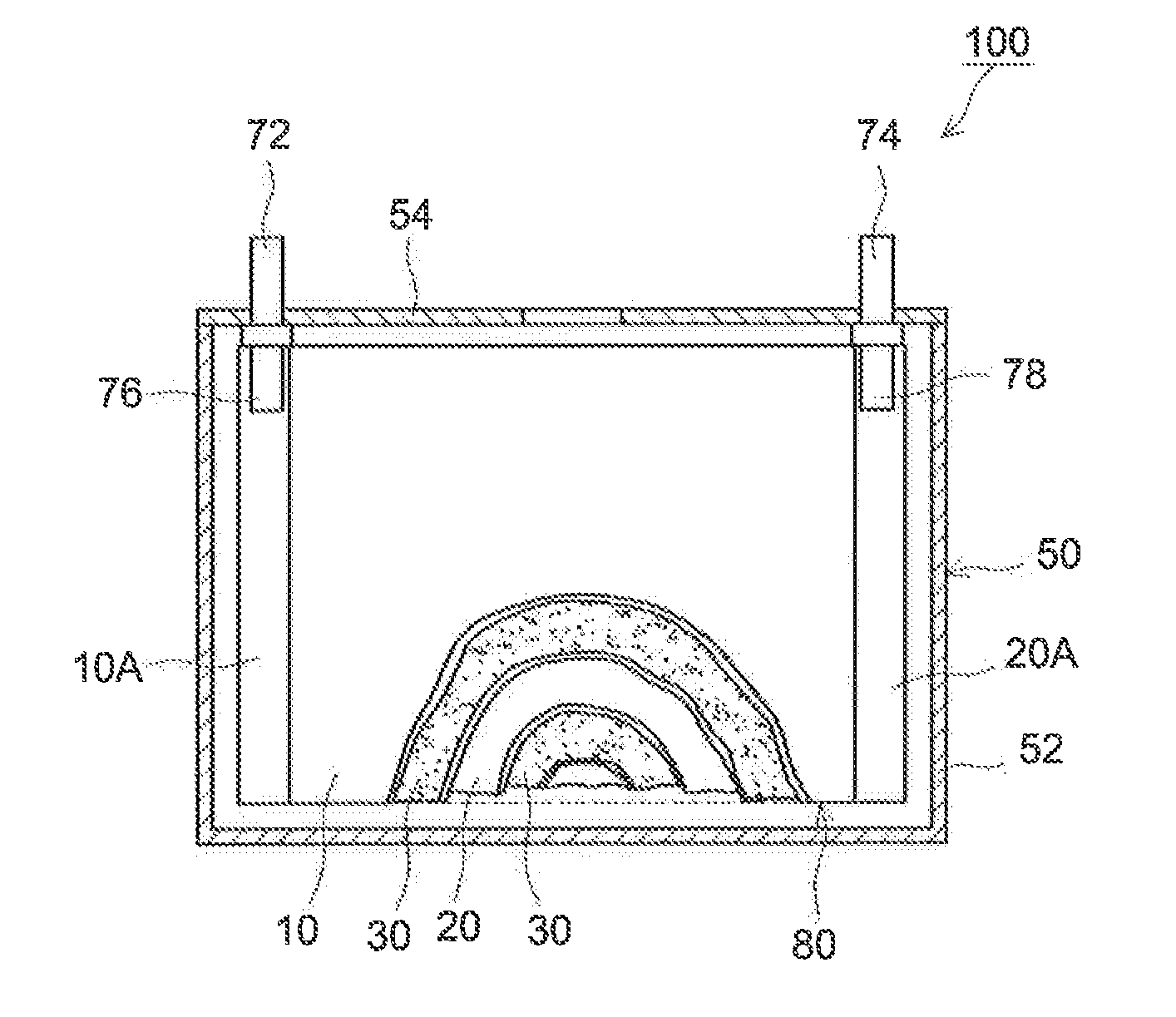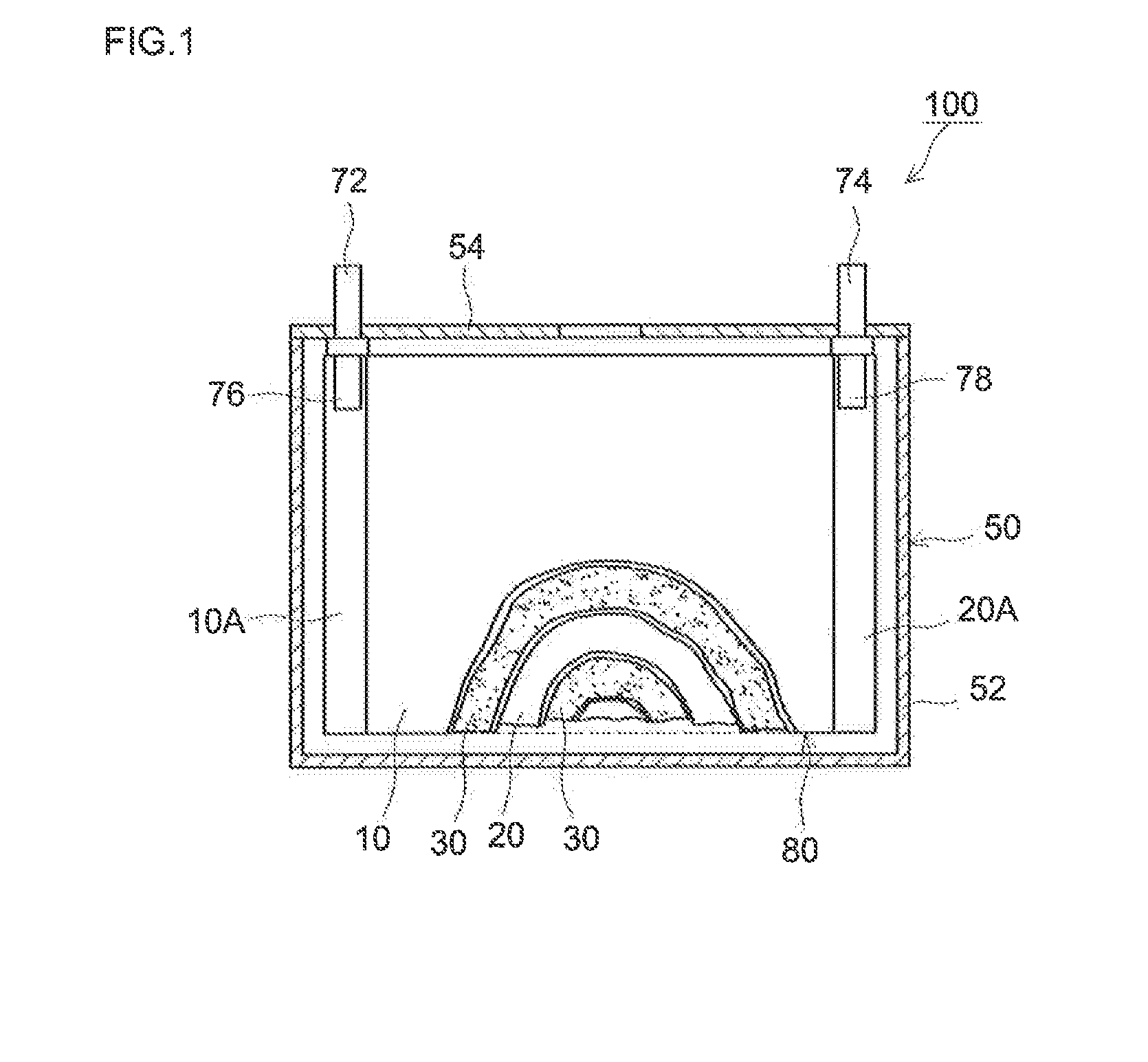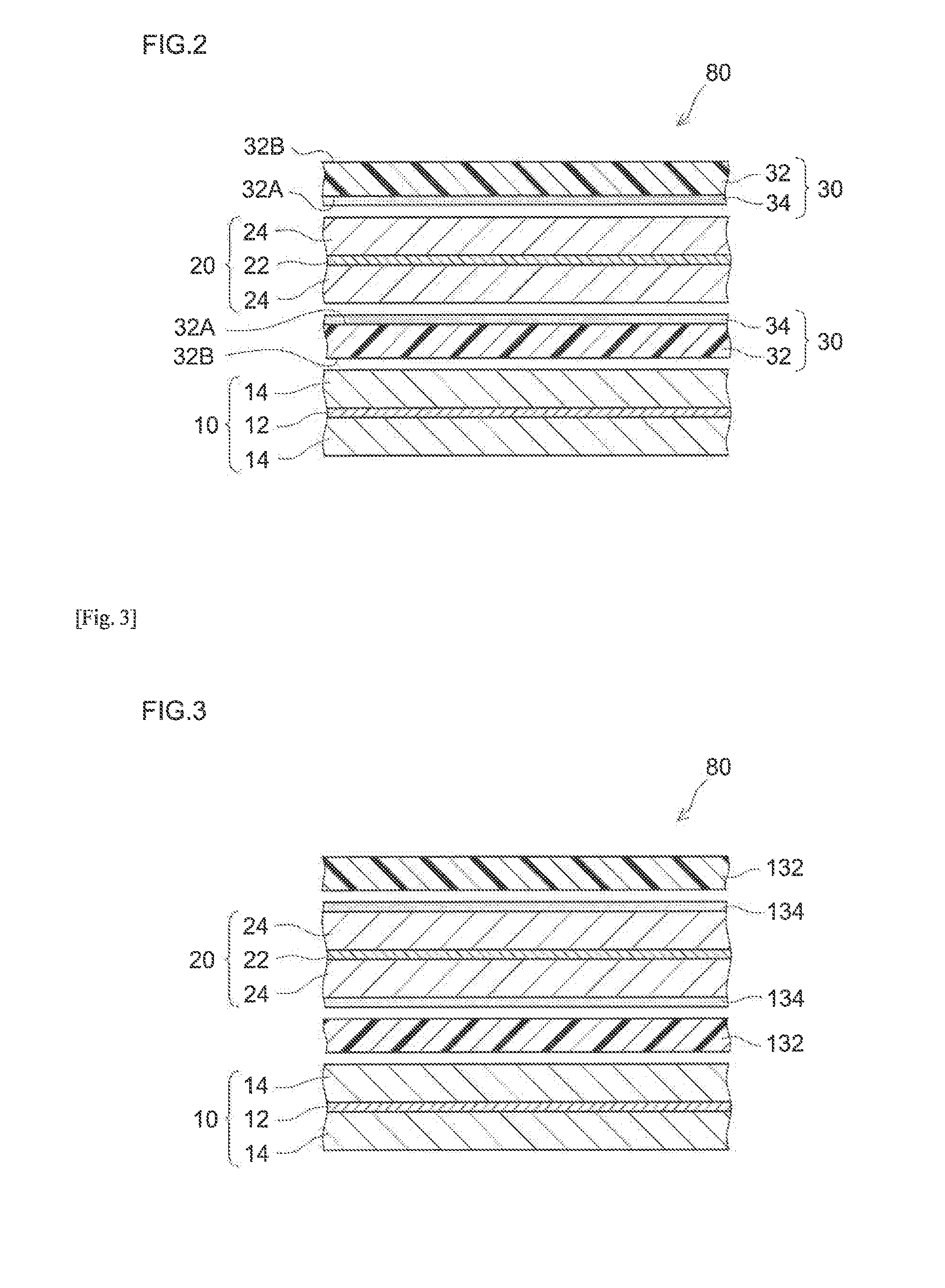Lithium secondary battery
a secondary battery and lithium technology, applied in the direction of batteries, sustainable manufacturing/processing, cell components, etc., to achieve the effect of reducing overvoltage, reducing overvoltage, and increasing polarization
- Summary
- Abstract
- Description
- Claims
- Application Information
AI Technical Summary
Benefits of technology
Problems solved by technology
Method used
Image
Examples
example 1
[0088](Fabrication of Heat-Resistant Separator)
[0089]Alumina powder (0.6 μm average particle diameter; available from Sumitomo Chemical Co., Ltd.; “AKP3000”) as an inorganic filler, an acrylic binder (a Zeon Corporation product) and CMC (available from Dai-ichi Kogyo Seiyaku Co., Ltd.; trade name “BSH6”) were mixed with ion-exchanged water as a solvent at a Al2O3:binder:CMC ratio of 98:1.3:0.7, to a 50% non-volatile content (NV). For the mixing, a disper-mill (available from ROBO MICS) was used. The mixing was performed at 5000 rpm for 15 minutes. A slurry (dispersion) for forming inorganic porous material layers was thus prepared.
[0090]To a face (first face) of a single-layer polyethylene porous sheet (available from Ube Industries, Ltd., 20 μm thick, 45 vol % porosity, 400 sec / 100 mL air permeability; “porous PE sheet” hereinafter), the slurry prepared above was applied with a gravure coater and allowed to dry at 70° C. to form an inorganic porous material layer. The applied amoun...
example 2
[0099]NiO powder (400 mesh nickel oxide available from Alfa Aesar pulverized in a planet ball mill to about 0.5 μm average particle diameter) as a Li absorber was included in the inorganic porous material layer of the heat-resistant separator in Example 1. More specifically, at a Al2O3:NiO:binder:CMC ratio of 98:85:1.3:0.7, they were mixed with ion-exchanged water to a 50% NV to prepare a slurry for forming inorganic porous material layers. The slurry was applied to a first face of the porous PE sheet to an applied amount of 1.39 times the mass applied in Example 1 and allowed to dry. Otherwise, in the same manner as Example 1, a heat-resistant separator was fabricated. Using the heat-resistant separator, a laminated cell was constructed. The heat-resistant separator used for fabricating the cell according to the present example contained, in the inorganic porous material layer facing the negative electrode, NiO in an amount equivalent to 10% by mass of the positive electrode active...
example 3
[0100]An inorganic porous material layer-firming slurry was prepared at a Al2O3:NiO:binder:CMC ratio of 98:102:1.3:0.7 and the amount of the slurry applied based on the solid content was 2.02 times the mass applied in Example 1. Otherwise, in the same manner as Example 1, a laminated cell was constructed. The heat-resistant separator used for fabricating the cell according to the present example contained NiO in an amount equivalent to 12% by mass of the positive electrode active material in the inorganic porous material layer facing the negative electrode.
PUM
| Property | Measurement | Unit |
|---|---|---|
| temperature | aaaaa | aaaaa |
| thickness | aaaaa | aaaaa |
| density | aaaaa | aaaaa |
Abstract
Description
Claims
Application Information
 Login to View More
Login to View More - R&D
- Intellectual Property
- Life Sciences
- Materials
- Tech Scout
- Unparalleled Data Quality
- Higher Quality Content
- 60% Fewer Hallucinations
Browse by: Latest US Patents, China's latest patents, Technical Efficacy Thesaurus, Application Domain, Technology Topic, Popular Technical Reports.
© 2025 PatSnap. All rights reserved.Legal|Privacy policy|Modern Slavery Act Transparency Statement|Sitemap|About US| Contact US: help@patsnap.com



